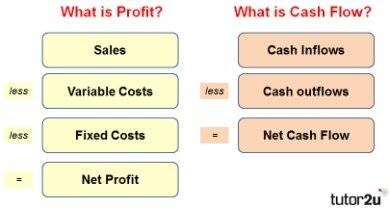
With the advent of big data and technological advancements, the importance of data analytics (DA) has surged in the accounting field. Accountants leverage data analytics to research financial information, unravel valuable insights hidden within financial statements, devise financial strategies, reduce expenses, discover process enhancements and manage risks. The capability to analyze massive quantities of economic data has given rise to fresh prospects for accountants and their teams to aid strategic decision-making and generate company value. If you’re looking for data analytics software for accountants specifically, then you might want to look into IDEA. Because it was engineered with accounting professionals in mind, it’s capable of performing the exact functions they’ll need. If you’re looking for skills to future-proof your career in accounting, let me introduce you to data analytics.
The changes are apparent in hiring practices, business services, and the industry’s approach to analytics, artificial intelligence, and other emerging technologies. Business Intelligence Tools allow Accounting Professionals to extract actionable business insights from a data set. These tools help in cleaning the data, modeling data, and deliver easy-to-understand visualizations. These visualizations provide in-depth insights and help in identifying the areas of improvement. Predictive Analytics is the use of advanced Analytic tools to find real-time insights and forecast future occurrences using historical data. Accountants can utilize well-tested and highly accurate Predictive Analytic models to transform the way your business operates.
What types of skills will new accountants need to stay competitive in a data-driven world?
These search processes use various computer science techniques, generally centered on ranking algorithms. Usually, the idea is to have the algorithm (i.e., the system) decide which documents (or websites, etc.) are most relevant to a user-initiated search (i.e., a query) of some overall collection, or population, of documents. These algorithms can rely on vector space or probability models, which make use of algebraic and probabilistic concepts available in undergraduate courses. The objective of the algorithm is to transform each document, which likely features significant qualitative data in the form of words and sentences, into quantitative vectors reflecting the frequency of all of the words in the document. Financial institutions like loaning bodies, banks, trading firms, etc produce huge amount of data regularly. To extract useful insights out of this data, it is important to deploy a data handling language that can control and analyze it completely.
- Check out the following tabs to learn more about our Data Analytics offer within Connect.
- Among its potential uses, topic modeling provides an alternative to text-retrieval methods for an auditor to identify a set of documents to examine.
- According to a 2020 survey of accounting professionals by software vendor Sage, 44% of accounting firms were using advanced and predictive analytics that leverage big data, or planned to do so in the next 12 months.
For example, they can track employee productivity, revenue generated per employee and other metrics directly impacting the company’s bottom line. This enables managers to provide feedback and coaching, develop targeted training programs and make informed decisions about promotions and bonuses. For employees, aligning individual goals with the company’s broader objectives enables them to focus on high-impact activities that drive business growth. With the advancement of machine learning and artificial intelligence tools, teams can achieve data-handling numbers that were previously unthinkable. There are many definitions of Big Data, but the generally accepted view is that Big Data is a set of data that’s too large to use standard data analysis tools or methods to analyze. It’s also extremely helpful to understand languages like Python and “R” to create custom algorithms and data models that can be used with larger sets of data.
Recommended if you’re interested in Data Analysis
Each assignment type adds a bit more level of understanding than the last, becoming more robust and fostering higher-order thinking. Check out the following tabs to learn more about our Data Analytics offer within Connect. We continue to hear from industry leaders just how important employability skills and critical thinking skills are for student success after graduation. While the accounting profession values the importance of data analytics, the world is at a new frontier in terms of data availability and sophisticated tools to conduct such analyses. Big data has gradually taken over diverse industries in a very short period and financial industry is not an exception.

Clients have the option of applying the change automatically with each transaction or doing so manually on a per-transaction basis. Acorns’ robo-adviser applies algorithms to manage customers’ investment portfolios, which is much less expensive than relying on a human investment adviser. Blockchain can be termed as a Data Structure that stores transactional records while ensuring Security, Transparency, and Decentralization. This Blockchain can be used to store programs that run when predetermined conditions are met. Academic Partnerships maintains this website on behalf of University of Wisconsin-Parkside. UW-Parkside maintains responsibility for curriculum, teaching, admissions, tuition, financial aid,
accreditation, and all other academic and instruction-related functions and decisions.
Tools for Data Analytics in Accounting
But it was a highly manual process, and the success depended on internal relationships and one’s ability to extract information from other departments. Data mining is the process of using software to identify patterns in large data repositories to learn more about a business’s customers, devise more effective marketing strategies, and operate more efficiently. Data mining in accounting extracts knowledge from huge stores of financial and other data to improve accounting practices’ effectiveness. As accounting and finance firms develop their plans for using data analytics, implementation will focus on several specific areas, according to the Institute of Management Accountants. For performance measurement, 7% of firms will apply data analytics, 26% big data, and 18% both.
- The use of predictive analytics doubles the average profit and customer lifetime value.
- You’ll also investigate if the effect of an independent variable depends on the level of another independent variable by including interaction terms in the multiple regression model.
- Prior to receiving his PhD in Accounting Information Systems from Rutgers University, he worked at Google in Mountain View, California.
- Ramlukan said data analytics is a skill that can be applied to many scenarios across all service lines.
Your electronic Certificate will be added to your Accomplishments page – from there, you can print your Certificate or add it to your LinkedIn profile. If the right amount of focus and time is put into understanding the why and how… In this module, you’ll be guided through a mini-case study that will illustrate the first three parts of the FACT model, with a focus on the C, or calculations part of the FACT model. First, you will perform a correlation analysis to identify two-way relationships, and analyze correlations using a correlation matrix and scatter plots.
Predictive Analytics
Finance and accounting professionals with little to no experience with data analytics. While data visualization in theory relies on how human senses perceive and store information, it also tends to have the most practical and intuitive appeal of the data analytics areas. Software products such as Excel and Tableau are popular because they allow a user to interface with and plot data without requiring a sophisticated computer science background. Thus, while advanced data analytics techniques will be paramount for accountants in the future, the ability to communicate data easily to various audiences continues to be an important skill. Ultimately, accountants should be encouraged to move beyond simply clicking a button in existing data analytics software—including advanced software packages such as those from SAS and ACL—to understanding how to program their own tests. Given the required structure of programming languages, again, one would expect prospective accountants to be well-suited to embrace these changes in education.
Uses of Data Analytics in Accounting and Finance
By analyzing large data sets, organizations can evaluate the effectiveness of different business strategies and forecast outcomes. Once decisions are implemented, DA technologies provide real-time monitoring of business performance, allowing for timely adjustments to streamline operations and processes. One of the key aspects of the advisor role that firms play is to help their clients make sense of financial data in order to improve their financial performance, look for opportunities to improve efficiencies or add a new line of business. In the near future, the availability of significantly more what is suta tax data — and analysis of that data — will help differentiate your firm from the firm that doesn’t embrace data analytics in their practice. The challenges include undertaking appropriate training to develop the skills needed to initiate and support data analytics activities, as well as altering the present audit model to include appropriate audit analytics techniques. The opportunities include a technology-rich audit model that provides for greater thoroughness, efficiency, and accuracy, as well as new business opportunities to provide data analytics expertise to CPAs’ clients and organizations.
Finally, you will learn how data analytics is influencing the different subdomains within accounting. In the analytics domain, there’s a clear shift in accountants’ responsibilities from administrative tasks to reasoning. They move from stacking and storing data to using it to filter relevant insights (descriptive and diagnostic analytics) and interpreting the results to attain larger business goals (predictive and prescriptive analytics). In this article, we discuss how data analytics is changing the accounting profession and how you can adapt to this demanding industry skill. Like text-retrieval methods, pattern discovery and text mining rely on vector space or probabilistic models to represent text data as quantitative vectors or features.
برچسب ها: